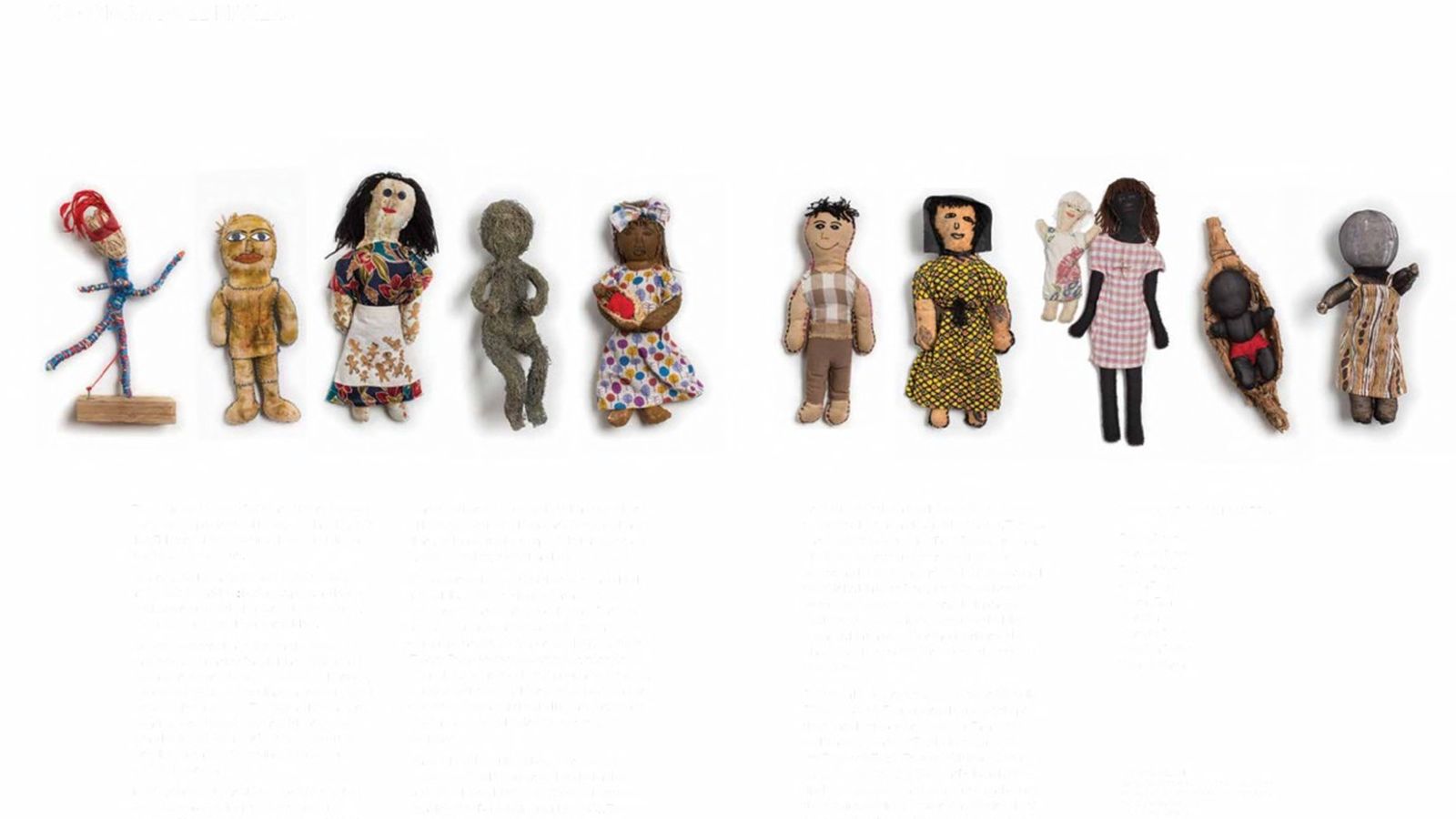Noongar Doll Makers
Noongar Dolls, 2017

The making of Noongar Dolls has a history that goes back to the improvised making of, and play with, dolls that Elders recall from the time they spent living on reserves and on country.Materials used to make the dolls were as eclectic as the dolls themselves: bush nuts, pegs, and sauce bottles were among the items refashioned to fuel the imagination and joy of Noongar children.
A contemporary revival of this practice began in the early 1990s when artists Pantjiti Mary McLean and Nalda Searles worked alongside women in Narrogin, in southwest Western Australia, on a project initiated by the local town council. The dolls and the makers from that period have since spread their influence far and wide, with Noongar Dolls being acquired for collections all over Australia and some being exhibited overseas.
In 2010,Community Arts Network(CAN) reignited the initiative as a healing project for women in Narrogin. ‘Yarns of the Heart’ project brought Nalda Searles and her colleague Cecile Williams together with new generations of Noongar ladies to stitch and share, each one creating unique dolls that expressed stories of love, loss, strength and joy.
A lot of personal and cultural sharing is embedded in the dolls, and their influence has again been widespread – particularly through Glenn Barkley’s inclusion of many examples in the Museum of Contemporary Art’s 2013 touring exhibition, String Theory: Focus on Contemporary Australian Art. Meanwhile, the practice has taken on a life of its own, manifesting through CAN projects across Noongar Country and from initiatives led by past participants who have now honed their skills as artists and facilitators.
Many of the dolls in this exhibition were created by women from Yued/Noongar families who had lived on the New Norcia Mission– an Aboriginal institution established by Benedictine monks in 1846. The ladies shared in workshops held at the Mission, producing dolls that are redolent of their connection to country, their memories and their stories. This was part of CAN’s long-running ‘Bush Babies’ program, which gave expression to stories of those born on country and of the Noongar ‘midwives’ who assisted their births. Margaret Drayton’s dolls celebrate the burying of placentas on country, which practice was known to happen in the gardens of the Mission cottages. Margaret and her daughter buried the placentas of her grandchildren during their return to New Norcia.
Dolls from Noongar artists and facilitators Marcelle Riley and Sharyn Egan emerged from workshops they shared with Gomeroi women in Tamworth and Walgett in early 2017 at the invitation of the 3rd Tamworth Textile Triennial. This is another fine example of the ‘life’ that Noongar Dolls embody – rippling out to people and communities far beyond their origins, offering their stories and their makers’ hearts and hands to souls on country everywhere.
DOLL MAKERS
Angelina Ryder, Fatima Drayton, Gloria Egan, Marcelle Riley, Margaret Drayton, Mary Nannup, Roslyn Drayton, Sharyn Egan, Yolande Yarran
Image: Noongar Dolls, 2017 Eco-dyed fabric, recycled fabric, wool, plastic, cotton,acrylic,wire,timber,twine,paperbark, hessian, raffia, found objects, Photo: Natalija Brunovs
